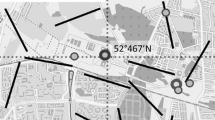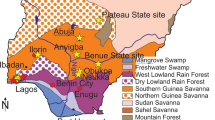Abstract
Different species of alder cause hay fever symptoms in pollen allergy sufferers within Europe: Alnus glutinosa (black alder), A. incana (grey alder), A. viridis (green alder) and more recently A. × spaethii (japonica × subcordata; Spaeth’s alder). In Austria, the alder pollen season usually lasts from January to April (until June in the mountains due to later flowering of A. viridis). The pollen season started very early in 2014, namely by the end of December 2013 in Vienna with the first pollination of alder. Such an early flowering around Christmas is known for A. × spaethii and was first recognized as problem in Switzerland. Up to now, this alder species was not reported in Austria. A sample including twigs, leaves, catkins and pollen from Switzerland was compared with an unusually early flowering alder in Vienna. The pollen of these (Alnus × spaethii) and in addition from black and green alder was analysed by light microscopy and scanning electron microscopy to find possible morphological differences or similarities in their pollen morphology. The general morphology revealed that A. × spaethii is present in Austria (planted in a park) and was responsible for the first burden on pollen allergy sufferers during the alder pollen season in Vienna, although pollen data revealed no significant alder pollen concentrations. The results emphasize the importance of monitoring phenology for pollen information.



Similar content being viewed by others
Abbreviations
- EAN:
-
European aeroallergen network
- PHD:
-
Patient’s hayfever diary
- SLI:
-
Symptom load index
References
Banaev, E. V., & Bažant, V. (2007). Study of natural hybridization between Alnus incana (L.) Moench. and Alnus glutinosa (L.) Gaertn. Journal of Forest Science, 53(2), 66–73.
Bastl, K., Kmenta, M., Jäger, S., Bergmann, K.-C., & Berger, U. (2014). Development of a symptom load index—enabling temporal and regional pollen season comparisons and pointing out the need for personalized pollen information. Aerobiologia,. doi:10.1007/s10453-014-9326-6.
Blackmore, S., Steinmann, J. A. J., Hoen, P. P., & Punt, W. (2003). Betulaceae and corylaceae. Review of Palaeobotany and Palynology, 123(1–2), 71–98.
Chen, Z.-D., Manchester, S., & Sun, H.-Y. (1999). Phylogeny and evolution of the betulaceae as inferred from DNA sequences, morphology and paleobotany. American Journal of Botany, 86(8), 1168–1181.
Dąbrowska, A., & Kaszewski, B. M. (2012). The relationship between flowering phenology and pollen season of Alnus Miller. Acta Agrobotanica, 65(2), 57–66.
Dorner, T., Rieder, A., Lawrence, K. & Kunze, M. (2006). Österreichischer Allergiebericht. Verein Altern mit Zukunft (Ed.), Wien: 135 pp.
Douda, J., Doudová, J., Drašnarová, A., Kuneš, P., Hadincová, V., et al. (2014). Migration patterns of subgenus Alnus in Europe since the last glacial maximum: a systematic review. PLoS One, 9(2), e88709. doi:10.1371/journal.pone.0088709.
Ebner, C., Ferreira, F., Hoffmann, K., Hirschwehr, R., Schenk, S., Szépfalusi, Z., et al. (1993). T cell clones specific for Bet v I, the major birch pollen allergen, crossreact with the major allergens of hazel, Cor a I, and alder Aln g I. Molecular Immunology, 15, 1323–1329.
Erdtman, G. (1953). On the difference between the pollen grains in Alnus glutinosa and those in Alnus incana. Svensk Botanisk Tidskrift, 47(1953), 449–450.
Erdtman, G. (1954). An introduction to pollen analysis (p. 239). Waltham, Mass: Chronica Botanica Company.
EUFORGEN (2009). Distribution map of Black alder (Alnus glutinosa). http://www.euforgen.org/distribution-maps Requested on Sept 23, 2014.
Ferguson, D. K., Zetter, R., & Paudayal, K. N. (2007). The need for SEM in palaeopalynology. Comptes Rendus Palevol, 6, 423–430.
Frenguelli, G., Spieksma, F. T. M., Brichhi, E., Romano, B., Mincigrucci, G., Nikkels, A. H., et al. (1991). The influence of air temperature on the starting dates of the pollen season of Alnus and Populus. Grana, 30, 196–200.
Galán, C., Smith, M., Thibaudon, M., Frenguelli, G., Oteros, J., Gehrig, R., et al. (2014). Pollen monitoring: minimum requirements and reproducibility of analysis. Aerobiologia,. doi:10.1007/s10453-014-9335-5.
Gassner, M., Gehrig, R., & Schmid-Grendelmeier, P. (2014). Alder pollen of Alnus spaethii at christmas: from epidemiology of molecular allergens to the political solution. Clinical and Translational Allergy, 4(Suppl 2), p36. doi:10.1186/2045-7022-4-S2-P36.
Gassner, M., Gehrig, R., & Schmid-Grendelmeier, P. (2013). Hay fever as a Christmas gift. New England Journal of Medicine, 368, 393–394.
Gehrig, R., Gassner, M., & Schmid-Grendelmeier, P. (2014). Alnus × spaethii pollen can cause allergies already at Christmas. Aerobiologia,. doi:10.1007/s10453-014-9360-4.
Gehrig, R., & Peeters, A. G. (2000). Pollen distribution at elevations above 1000 m in Switzerland. Aerobiologia, 16, 69–74.
Hesse, M., Halbritter, H., Zetter, R., Weber, M., Buchner, R., Frosch-Radivo, A., & Ulrich, S. (2009). Pollen terminology, an illustrated handbook (p. 261). New York: Springer.
Hirst, J. M. (1952). An automatic volumetric spore trap. Annals of Applied Biology, 39(2), 257–265.
Jäger, S., Mandroli, P., Spieksma, F., Emberlin, J., Hjelmroos, M., Rantio-Lehtimaki, A., et al. (1995). News. Aerobiologia, 11, 69–70.
Leopold, E. B., Birkebak, J., Reinink-Smith, L., Jayachandar, A. P., Narváez, P., & Zaborac-Reed, S. (2012). Pollen morphology of the three subgenera of Alnus. Palynology, 36(1), 131–151.
Łukasiewicz, A. (1984). Potrzeba ujednolicenia metodyki fenologicznej w polskich ogrodach botanicznych i arbo- retach. The need to standardise the phenological me- tod in Polish botanical garden and arboreta. Wiad. Bot., 28(2), 153–158. (in Polish).
Myszkowska, D., Jenner, B., Puc, M., Stach, A., Nowak, M., Malkiewicz, M., et al. (2010). Spatial variations in dynamics of Alnus and Corylus pollen season in Poland. Aerobiologia, 26(3), 209–221.
Pancer-Kotejowa, E., & Zarzycki, K. (1980). Zarys ekologii (Outline of ecology). In S. Białobok (Ed.), Olsze Alnus Mill. (Alders) (pp. 229–257). Warsaw: Instytut Dendrologii PAN.
Puc, M., & Kasprzyk, I. (2013). The patterns of Corylus and Alnus pollen seasons and pollination periods in two Polish cities located in different climatic regions. Aerobiologia, 29(4), 495–511.
Punt, W., Hoen, P. P., Blackmore, S., Nilsson, S., & Le Thomas, A. (2007). Glossary of pollen and spore terminology. Review of Palaeobotany and Palynology, 143, 1–81.
Schadauer K. (1994). Baumartenatlas für Österreich. Die Verbreitung der Baumarten nach Daten der Österreichischen Waldinventur. FBVA-Berichte, Wien, (76): 157S.
Wahl, R., Schmid-Grendelmeier, P., Cromwell, O., & Wüthrich, B. (1996). In vitro investigation of cross-reactivity between birch and ash pollen allergen extracts. Journal of Allergy and Clinical Immunology, 98(1), 99–106.
Zetter, R. (1989). Methodik und Bedeutung einer routinemäßig kombinierten lichtmikroskopischen und rasterelektronenmikroskopischen Untersuchung fossiler Mikrofloren. Courier Forschungsinstitut Senkenberg, 109, 41–50.
Acknowledgments
We thank the Institute for Paleontology (University Vienna) for granting access to the electron microscope to enable the SEM study. Dr. Walther Till helped in the Herbarium (Department for Botany, University Vienna). Markus Gassner provided a sample of A. × spaethii and thus enabled this first comparison (now stored in the Herbarium of the University Vienna). We are grateful for the availability of the distribution map of black alder from EUFORGEN (2009). Pollen data were from EAN and symptom data from PHD. We thank three anonymous reviewers who improved the manuscript due to their valuable feedback.
Author information
Authors and Affiliations
Corresponding author
Rights and permissions
About this article
Cite this article
Bastl, K., Kmenta, M. & Berger, U. Unusually early flowering of alder in Vienna: first report of Alnus × spaethii in Austria, combined LM and SEM study of alder species and impact on pollen allergy sufferers. Aerobiologia 31, 515–524 (2015). https://doi.org/10.1007/s10453-015-9383-5
Received:
Accepted:
Published:
Issue Date:
DOI: https://doi.org/10.1007/s10453-015-9383-5




